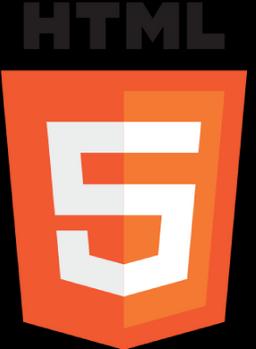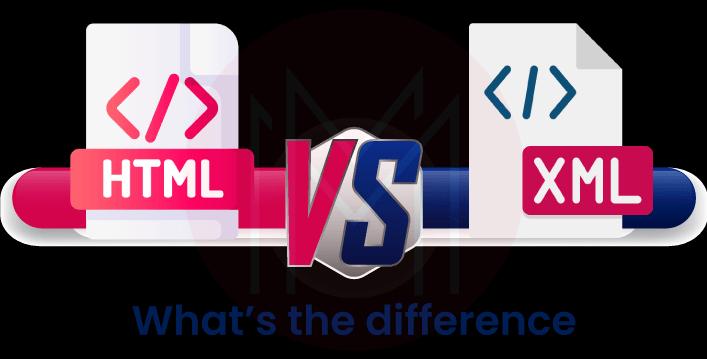- 6 Hot And In-Demand Tech Areas In 2024
- How To Forward Your Career With Cloud Skills?
- Top 7 On-Demand IT Certifications
- Most In-demand Technologies To Upskill Your Career
- Top 10 Hottest Tech Skills to Master in 2024
- Top Skills You Need to Become a Data Scientist
- Groovy Interview Questions
- Facets Interview Questions
- Crystal Reports Tutorial
- VAPT Interview Questions
- Flutter Tutorial
- Saviynt VS Sailpoint
- Flutter vs Xamarin
- PingFederate Interview Questions and Answers
- Dart vs Javascript : What's the Difference?
- Terraform Private Registry
- Cylance Interview Questions and Answers
- Sophos Interview Questions and Answers
- Top Camunda Interview Questions
- NUnit Interview Questions and Answers
- Impala Interview Questions and Answers
- ETL Tutorial
- Ionic Interview Questions
- Grafana Tutorial
- What is VAPT? - A Complete Beginners Tutorial
- SnapLogic Interview Questions
- Saviynt Interview Questions
- What is PingFederate? - A Complete Beginners Tutorial
- SnapLogic Tutorial
- Grafana Interview Questions
- RHCE Interview Questions and Answers
- Web Services Interview Questions
- Domo Interview Questions and Answers
- Terraform Interview Questions
- What is Sophos? | Sophos Turorial for Beginners
- Top Servlet Interview Question And Answers
- NLP Interview Questions and Answers
- Microsoft Intune Interview Questions
- Top XML Interview Questions And Answers
- Tosca Commander
- Katalon vs Cypress
- SQLite Tutorial
- Tosca Tutorial - A Complete Guide for Beginners
- Xamarin Interview Questions and Answers
- UiPath vs Automation Anywhere - The Key Differences
- OpenShift Interview Questions
- What is Katalon Studio - Complete Tutorial Guide
- Kronos Interview Questions
- Tosca Framework
- Burp Suite Tutorial
- Mendix Interview Questions
- Power Platform Interview Questions
- Burp Suite Interview Questions
- What is Mendix
- What is Terraform ?
- Burp Suite Alternatives
- Dart vs Kotlin
- What is Kronos?
- ES6 Interview Questions
- Entity Framework Interview Questions
- COBOL Interview Questions
- Express JS Interview Questions
- OSPF Interview Questions
- LINQ Tutorial
- CSS3 Interview Questions and Answers
- Auth0 Tutorial
- MS Access Interview Questions
- What is SPARQL - A Complete Tutorial Guide
- ExpressJS Tutorial
- UML Tutorial
- Cypress vs Jest
- Impacts of Social Media
- OWASP Interview Questions
- Security Testing Interview Questions
- OpenShift vs Docker
- ES6 Tutorial
- Spark SQL Interview Questions
- Spark SQL Tutorial
- What is OWASP?
- AppDynamics Interview Questions
- Dynatrace Interview Questions
- Rest Assured Tutorial
- New Relic Interview Questions
- REST API Tutorial
- Datadog Interview Questions
- Rest API Interview Questions
- Rest Assured Interview Questions
- PTC Windchill Interview Questions
- Easiest Tech Skills To Learn
- Python SQLite Tutorial - How to Install SQLite
- Datadog Tutorial - Datadog Incident Management
- What is AppDynamics - AppDynamics Architecture
- RabbitMQ Interview Questions And Answers
- What is Dynatrace
- Datadog Vs Splunk
- Web Developer Job Description
- JP Morgan Interview Questions
- Types of Corporate Training
- Benefits of Corporate Training
- What is Corporate Restructuring?
- Blended Learning in Corporate Training
- What is Corporate Level Strategy?
- Flutter Projects and Use Cases
- How to Become a Web Developer
- How To Install Keras?
- How to Install Flutter on Windows?
- How to Install Cypress on Windows?
- How to Become a Computer Scientist?
- How to Install Katalon Studio in Windows
- How to Become a Programmer
- OWASP Projects and Use Cases
- How to Install Sophos?
- Workato Tutorial
- Workato Tutorial - What is Workato?
All of the programs, languages, and technologies used to create a web page use HTML as their common language. HTML provides the fundamental structure for all websites. And HTML5 is the most recent version of HTML that is now in use.
So let's discuss the differences between HTML5 and HTML. But before we can appreciate the differences, we must first comprehend what HTML5 and HTML are.
HTML stands for Hypertext Markup Language. After reading this extensive explanation of HTML, we undoubtedly want to know what hypertext markup language means!
We will first go through what HTML5 and HTML are in order to better comprehend markup language before getting into their differences. And by that time, you'll be able to distinguish between the two on your own!
HTML vs XML - Table of Content
What is HTML?
 HyperText Maurkup Language, or HTML. Tim Berners created it to make electronic or online pages. The pages are linked together by hyperlinks. HTML is the language that was used to create everything on the internet. HTML enables the insertion of text and graphics into web pages. HTML has undergone several iterations, with HTML5 being the most recent. It serves as the framework for web development projects, giving them direction and a foundational look. Attributes and tags are part of HTML. Angle brackets (<>) are used to denote tags, and quotes are used for attributes.
HyperText Maurkup Language, or HTML. Tim Berners created it to make electronic or online pages. The pages are linked together by hyperlinks. HTML is the language that was used to create everything on the internet. HTML enables the insertion of text and graphics into web pages. HTML has undergone several iterations, with HTML5 being the most recent. It serves as the framework for web development projects, giving them direction and a foundational look. Attributes and tags are part of HTML. Angle brackets (<>) are used to denote tags, and quotes are used for attributes.
For example,
<p text-align=’center’> </p>In this case, the tag p designates a paragraph, and the attribute text-align aligns the content as needed. The element's end is indicated by the tag that ends in a slash(/).
HTML doesn't care about case. If the codes are written syntactically, there are no errors, and the machine quickly understands them. All text editors can access the written files, which are saved with a ".html" extension.
Features of HTML
- The language is straightforward and easy to understand. Everyone can comprehend the codes, and they can be changed.
- HTML can be used to create web pages since it has numerous tags.
- It enables the creation of web pages with custom content.
- Links to other pages are provided, making it possible to browse.
- Operating systems have no bearing on it. On Windows, Mac, Linux, etc., it functions identically.
- It lets the pages to be enhanced with pictures, videos, and audio, making it very appealing.
- Its dynamic character is enhanced by its simple integration with styling and scripting languages like CSS, Javascript, etc.
| Looking forward to become a master in "Programming & Frameworks Courses"? Check out the "HTML Training" and get certified today. |
What is XML?
 Extensible Markup Language is known as XML. In contrast to HTML, XML is used to store data rather than show it. It is frequently used for data transport. This is a markup language, so both humans and machines can readily understand it. XML is independent of hardware. We can employ elements and create specialised markup languages with XML. XML tags are self-descriptive, allowing users to design their own. The most recent version is XML 1.1, which was created by the W3C in 1996. XML tags are written within angular brackets (>), just like HTML tags.
Extensible Markup Language is known as XML. In contrast to HTML, XML is used to store data rather than show it. It is frequently used for data transport. This is a markup language, so both humans and machines can readily understand it. XML is independent of hardware. We can employ elements and create specialised markup languages with XML. XML tags are self-descriptive, allowing users to design their own. The most recent version is XML 1.1, which was created by the W3C in 1996. XML tags are written within angular brackets (>), just like HTML tags.Example,
<Data>
<Name>Suneel</Name>
<email>suneel@gmail.com</email>
<Contact>+1253889757</Contact>
</Data>Information is encapsulated around the tags using XML. We can see from the example above that John Wick's personal information is contained within the Data tag. Name, contact and email information are further included under the name, contact and email tags, respectively. This makes it possible to move data from one media to another.
XML is case-sensitive. All text editors can read, write, and modify the codes, which are saved with the.xml extension.
Related Article: Thymeleaf vs JSP
Features of XML
- Data storage is made simpler by XML by storing it as plain text. In comparison to database storage formats, this is simpler to retrieve.
- When using apps that are unable to render other data types, XML files facilitate data transfer.
- Data is accessible to the blind and others with other disabilities thanks to XML's compatibility with reading machines.
- XML can be expanded. Based on the needs of the application, users can generate self-descriptive tags in any language.
Pros and Cons of HTML vs XML
- Pros and Cons of HTML
- Pros:
- It is a popular Markup language that is simple to learn.
- It is free to use and does not require any particular software.
- Since codes may be written in text editors like notepad, additional software is not necessary.
- The Canvas element (<canvas>) enables programmers to include a lot of visuals.
- The ability to cache a programme enables for the storing of large files.
- Cons:
- Pages could need a lot of code, which could be challenging to manage.
- A page cannot be legitimate just by using HTML. JavaScript and CSS are required for that. If HTML is the sole technology employed, pages are static.
- Making dynamic pages is difficult. Static pages are made with HTML.
- Pros:
- Pros and Cons of XML
- Pros:
- Data may be transported and stored easily.
- Unicode and multilingual text are supported.
- simple to learn and programme.
- It improves data accessibility.
- Platform switching is made simpler.
- Since it saves data in plain text and is independent of hardware and software, exchanging data is incredibly simple.
- Cons:
- It does not support intrinsic data types.
- Redundant syntax is used.
- Pros:
Related Article: Rest API Interview Questions
HTML vs XML- Comparison
Since HTML is the primary language used to construct web pages and is a hypertext markup language, HTML5 and HTML are fundamentally different from one another (HTML). An updated version of HTML called HTML5 has features for the internet and a new markup language. The HTML language does not allow video or audio. HTML5 can handle both audio and video. Here are a few of the key distinctions between HTML5 and HTML, according to various criteria:

| HTML | XML | |
| Casing | It is case sensitive. While coding, upper- and lowercase letters must be considered. | There is no case distinction. In HTML, upper- and lowercase letters don't matter all that much. |
| Tags | Tags are predefined in HTML. The tags can be used by users to create web pages as needed. | Users can construct tags in XML. Users are able to construct tags in any language that suit their needs in this way. |
| Purpose | Its main objective is to exhibit or display the data. | The data's storage and transfer are its main functions. |
| Errors | Minor mistakes are accepted. | Data transit or storing is disrupted by errors, which must be fixed. |
| White Spaces | HTML does not allow the usage of white spaces. | In XML, white spaces are acceptable. |
| Nesting | If nesting is not correctly followed, does not present a significant error. | To avoid mistakes, nesting should be done carefully. |
| End Tags | Every tag must have a closing or ending tag. | Only a few tags, such <br>, <hr>, img>, etc., lack an ending or closing tag. |
| Object Support | HTML supports native objects. | Objects must be expressed using attributes in XML. |
| Formatting Decision | Data and the application are directly mapped. | The mapping of XML data to the application is not straightforward and needs a lot of work. |
| Document Size | HTML documents are generally modest in size due to their concise syntax and use of structured text. | An XML document has a huge file size due to the complicated codes and formatting methods. |
| JavaScript Integration | JavaScript code can be parsed directly into an HTML document without the need for any additional software. | requires the parsing of JavaScript codes and mapping using the Document Object Model (DOM). |
| Learning | Due to the absence of any other technologies, HTML is quite simple to understand. HTML is merely a display of the actual data, though. | Since it requires knowing technologies like XPath (XML Path), XML DOM (Document Model Object), Schema, etc. to interpret and format the data in the XML document, XML is somewhat challenging. |
FAQs Regarding the Difference Between XML and HTML
1. What distinguishes XML from HTML that is advantageous?
Without controlling the output's appearance or presentation, XML concentrates on the transfer of data. Due to HTML's emphasis on presentation and complicated coding, this makes XML simple to use.
2. XML or HTML: Which should I use?
Depends on the goal. HTML is preferable if the main goal is to display content. However, XML offers superior browser flexibility and capability than HTML when it comes to exchanging or conveying the data if it contains an excessive amount of information.
3. Can XML and HTML work Together?
Yes, XML and HTML are compatible with one another. While XML can convey data and information, HTML can handle the presentation and display of that data.
4. What connection does HTML and XML have to one another?
eXtensible Markup Language (XML) and HyperText Markup Language (HTML) are acronyms for each other. As a result, they are both markup languages that are used to emphasise specific online document parts and that are also understandable by both humans and machines.
5. XML: Is it front-end or back-end?
Neither the front end nor the back end are XML. A website or application uses this markup language to store and transfer data.
6. In HTML, is XML supported?
Yes. The <xml> tag can be used to incorporate XML codes in HTML texts.
7. What is the complete form of the two terms, XML and HTML?
The acronym of HTML is Hypertext Markup Language, while XML stands for eXtensible markup language.
| Would you like to ace XML job interviews? Top XML Interview Questions from MindMajix are exclusively for you! |
Conclusion
Both XML and HTML are data-related markup languages. It is intriguing to learn that both of these descended from Standard Generalized Markup Language (SGML) and reply to requests in a browser either directly or via AJAX. While XML saves and transmits data from one system to another, HTML only shows data. Despite the fact that they are both markup languages, they operate very differently. Learning both HTML and XML is crucial since they are the structural and essential components of every website and application.
 On-Job Support Service
On-Job Support Service
Online Work Support for your on-job roles.

Our work-support plans provide precise options as per your project tasks. Whether you are a newbie or an experienced professional seeking assistance in completing project tasks, we are here with the following plans to meet your custom needs:
- Pay Per Hour
- Pay Per Week
- Monthly
| Name | Dates | |
|---|---|---|
| HTML Training | Dec 13 to Dec 28 | View Details |
| HTML Training | Dec 16 to Dec 31 | View Details |
| HTML Training | Dec 20 to Jan 04 | View Details |
| HTML Training | Dec 23 to Jan 07 | View Details |

















